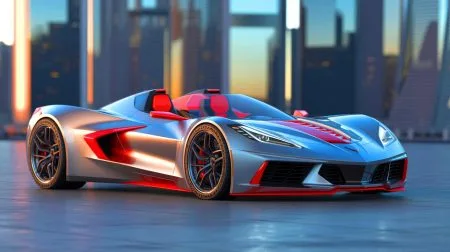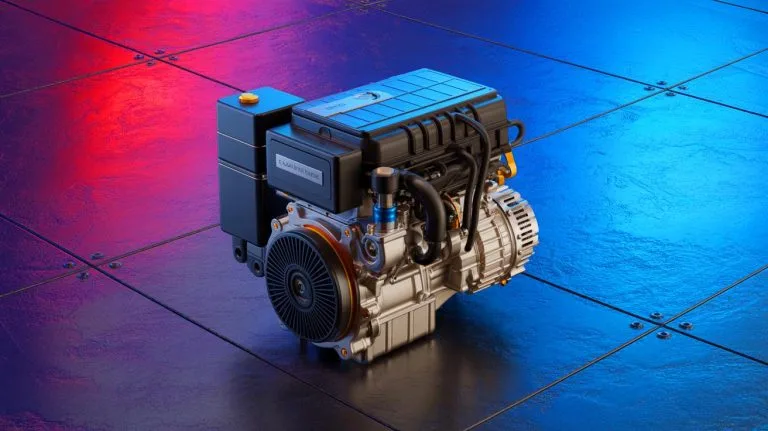| IN A NUTSHELL |
|
In an era when the automotive industry is steering towards electrification, a new development from Horse Powertrain is causing a stir. The company, known for its innovative approach to vehicle hybridization, has introduced the C15 engine-generator. This compact solution aims to enhance the range of electric vehicles without major structural changes. Positioned as a potential game-changer, the engine-sized “no larger than a briefcase” could redefine how we perceive hybrid technology. As governments and automakers rethink their electric vehicle strategies, Horse Powertrain’s timing appears impeccable, offering a balanced approach between electric and combustion power.
The Vision Behind Horse Powertrain’s Innovation
Horse Powertrain has long been a pioneer in the automotive industry, known for straddling the fine line between genius and audacity. With the introduction of the C15 engine-generator, they continue to challenge conventional wisdom. The timing of this innovation seems particularly fortuitous. As both governments and the automotive industry reconsider their timelines and strategies for electric vehicle adoption, Horse’s hybrid solution could provide a much-needed middle ground.
While the world has been pushing for full electrification, the transition has not been without its hurdles. Infrastructure challenges, range anxiety, and the environmental impact of battery production are just a few obstacles. Horse Powertrain’s C15 engine offers an alternative by seamlessly integrating with existing electric platforms. This not only extends the driving range but also provides flexibility in fuel options, including gasoline, ethanol, and synthetic fuels.
By focusing on hybridization, Horse Powertrain aims to address the limitations of current electric vehicle technology. The C15 engine is not just a product; it is part of a broader vision to create a more sustainable and practical approach to vehicle electrification.
Unpacking the “Briefcase-Sized” Engine
The idea of an engine-generator “no larger than a briefcase” is a captivating one, but how does it hold up under scrutiny? The C15’s dimensions are 19.7 x 21.7 x 11 inches, a size that Horse Powertrain optimistically compares to a briefcase. In reality, most briefcases tend to be smaller, typically around 16 to 18 inches long, 12 to 14 inches high, and 3 to 8 inches thick.
Despite this discrepancy, the C15 remains impressively compact for a combination engine, generator, inverter, and exhaust system. This compactness is crucial as it allows the C15 to fit into a variety of vehicle platforms with minimal modification. The engine’s design is intended for flexibility, able to be installed horizontally or vertically, in the front or rear of a vehicle.
While it may not be the literal size of a briefcase, the C15’s compact design and functionality are significant. It represents a substantial leap forward in hybrid technology, offering a practical solution for extending the range of electric vehicles while maintaining efficiency and reducing emissions.
Performance and Market Potential
Horse Powertrain’s C15 engine is designed to cater to a wide range of vehicles. The naturally aspirated 1.5-liter four-cylinder engine can produce up to 70 kW (94 hp), specifically aimed at Europe’s B and C vehicle segments. For larger vehicles, a turbocharged version delivers 120 kW (161 hp), providing even greater range extension capabilities.
The C15 engine operates independently of the vehicle’s drivetrain, focusing solely on charging the battery. This design choice allows it to function optimally, maintaining efficiency and reducing emissions. By doing so, it addresses one of the key concerns of electric vehicle adoption: range anxiety.
Moreover, the C15 offers a flexible approach to fuel, capable of running on various fuel types. This adaptability positions it as a versatile solution for automakers looking to balance performance, cost, and environmental considerations. As range-extended electric vehicles gain traction in global markets, Horse Powertrain’s C15 could play a pivotal role in shaping the future of hybrid technology.
Future Implications and Industry Reception
As Horse Powertrain prepares to showcase the C15 at the IAA Mobility 2025 in Munich, industry experts are keenly observing its potential impact. The C15’s multi-fuel capability and compact design make it an attractive option for automakers looking to enhance their electric vehicle offerings.
CEO Matias Giannini believes that range-extended electric vehicles are the fastest-growing powertrain category. With the C15, Horse Powertrain provides a straightforward and cost-effective way for OEMs to transform battery electric vehicle platforms into hybrid models. This could lead to a shift in how vehicles are designed, with a greater focus on flexibility and adaptability.
The introduction of the C15 is not just about extending the range of electric vehicles. It’s about redefining the approach to vehicle electrification, offering a more balanced and sustainable path forward. As the industry grapples with the challenges of full electrification, could hybrid technology become the bridge to a more sustainable future?
As the automotive industry continues its evolution, the introduction of the C15 by Horse Powertrain raises important questions about the future of vehicle technology. Will hybrid solutions like the C15 become a mainstay in the push for sustainable transportation, or will full electrification ultimately prevail? The answers could shape the landscape of automotive innovation for years to come.
Did you like it? 4.6/5 (26)







Is this actually smaller than my briefcase? 📏
Is the engine’s fuel flexibility enough to make it a viable alternative to fully electric vehicles? 🤔
I’m skeptical about the “briefcase-sized” claim. That’s one big briefcase! 😄
Impressive! But how noisy is it? 🚗🔊
How easily can this engine be installed in existing electric vehicles? Sounds complex.
Are there any plans to include solar charging capabilities?
Thank you, Horse Powertrain, for pushing the boundaries of hybrid tech! 🚗✨
Can it run on alternative fuels like hydrogen? 🌱
This sounds like a game-changer for hybrid tech!
Great idea, but how cost-effective is it for the average consumer?
How does the fuel efficiency compare to traditional engines?
Why focus on hybrid when the world is moving toward full electrification?
Horse Powertrain should have called it the “Magic Briefcase” 😄
Can it really fit into any EV platform without major mods?
Seems too good to be true. What’s the catch? 🤔
Finally, a hybrid solution that makes sense! Thank you, Horse Powertrain. 🙏
Will it work in extreme weather conditions?
How much will this cost to retrofit into existing EVs?
Do they have a patent on this technology?
Sounds like a great solution for range anxiety! ⚡
Is this compatible with self-driving technologies?
161 horsepower from something the size of a briefcase? Mind-blown! 🤯
Can this be scaled up for larger vehicles like trucks?
Does it support over-the-air software updates?
Any potential issues with heat dissipation?
How does it impact the overall weight of the vehicle?
Will this lead to any compromises in cargo space?
Are there any environmental concerns with its multi-fuel capability?
Pretty cool, but what about maintenance? 🔧
Will it be available globally or just in select markets?
Hope this isn’t just marketing hype! 😅
Is this more efficient than a traditional hybrid setup?
Can it be installed by the average mechanic or do you need specialists?
This could be a turning point for hybrids in the EV market. 🌍
What kind of warranty comes with the C15?
Are there any pilot projects or real-world tests available?
Looks promising, but let’s see the real-world performance first.
Is it compatible with other existing technologies like regenerative braking?
I’m co-sunfused. If this little wonder is designed to extend the range of an EV, then doesn’t the installation of it into a vehicle automatically make that vehicle a hybrid? It would no longer be an EV. Reminder, the vehicle will need a fuel tank and all of the associated plumbing and safety devices that go with it.